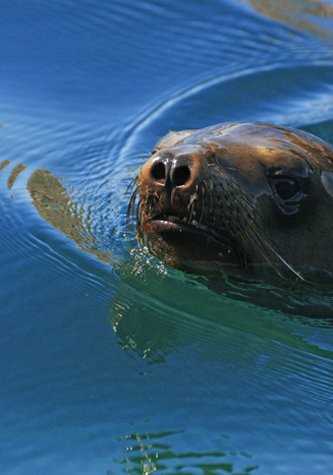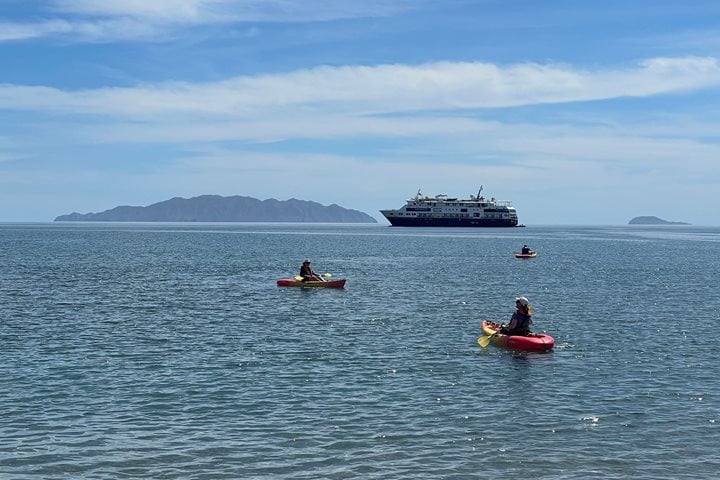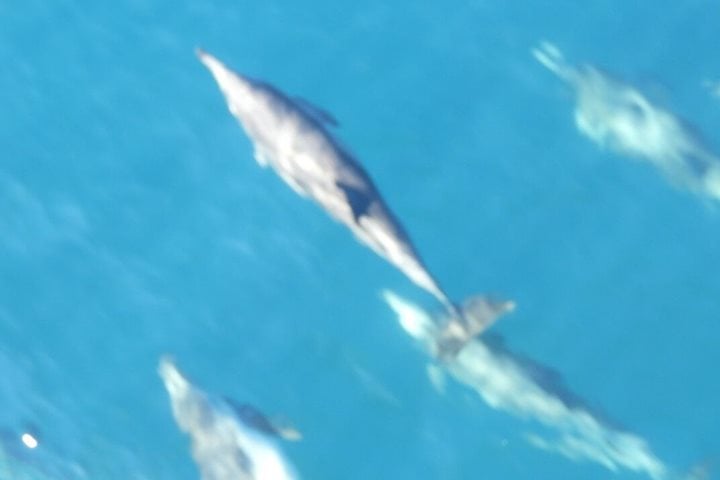When we woke up this morning we were en route to Los Islotes, a magnificent little corner broken off from the northern tip of the contiguous Espiritu Santo and Partida Sur Island complex. The sky was clear of clouds, the sun very bright and, most important, the waters of the Gulf of California were comfortably calm and the navigation aboard the National Geographic Sea Bird was as smooth as a knife through butter.
After sunrise we reached the little islets and began to hear the roaring, barking, and burping of the California sea lions, which are the local, noticeable residents of the place. A strong smell filled the breeze too, a combination of the sea lions “waste” and guano from the hundreds of seabirds that also share the rookeries. After anchoring, our brave snorkelers got in the sea of “refreshing” water and enjoyed the many wonders that live there, like big schools of sardines and hundreds of reef fish and marine invertebrates. Dozens of sea lions pups, less than a year old, played at the snorkeling boat in little rafts while the big males and pregnant females rested on the rocks. Immature males dove and swam around the snorkelers, and showed curious eyes and minds when they saw the air bubbles coming up from our diver Carlos Navarro, who caught a lot of the undersea activity on video.
We finished our snorkeling in the midmorning, but continued with interesting Zodiac cruises around Los Islotes. Many blue-footed boobies were seen on the cliffs displaying their ritualized dancing for mating. The frigatebirds soared above in search of fishes on the surface of the sea or scouting to detect birds suitable to be chased and stolen. Yellow footed gulls were busy choosing places to nest. And, to my delight, we enjoyed unusual views of the Brandt’s cormorants, common but not abundant, but certainly beautiful, residents of the islets.
Later, just before lunch, we raised the anchor and sailed to our afternoon destination: Ensenada Grande, a few miles southwest from Los Islotes. Our lunch, a typical Mexican dish was served, “Pozole,” about which one of our naturalists, William Lopez-Forment, explained its origins and content. In the early afternoon we arrived at Ensenada Grande and commenced activities like hiking and kayaking. The kayakers discovered the impressive geology of the island: volcanic ignimbrites eroded in many ways and colored mainly in dark pink. The hikers tested themselves and took a long excursion of about four miles along on a beautiful arroyo. The hike finished in the eastern side at a height of 900 feet above the sea level. All of us that visited the island discovered some of the native inhabitants, like the ground squirrels, chuckwallas, spiny and side-blotched lizards, the endemic couchwhip (a non-poisonous snake of beautiful brown and cream stripes along its back), and tarantula wasps, that collectively represented a nice “goodbye” to our amazing exploration of the Gulf of California and Magdalena Bay.







